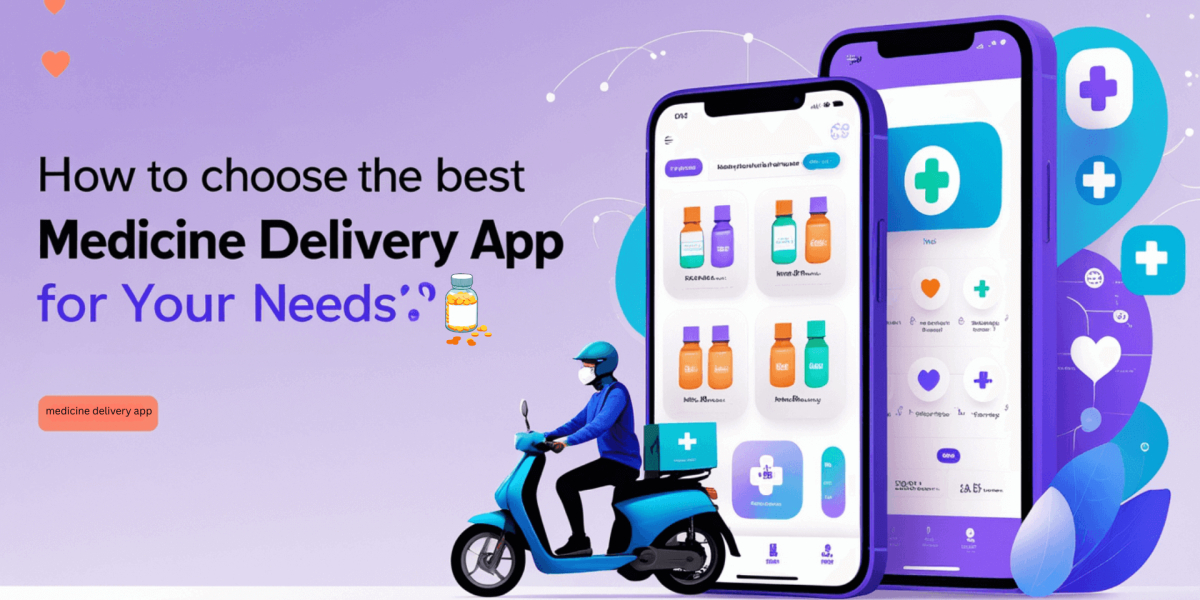How To Create A Successful Mobile App Development Strategy
- By Chris Alex
- 09-01-2024
- Mobile App Development

In the ever-evolving landscape of the digital era, the importance of a successful mobile app transcends the realm of luxury; it has become an absolute necessity. As societies worldwide undergo a profound shift towards digital reliance, mobile applications emerge as the quintessential interface connecting businesses with their consumers. The multifaceted role of these apps is underscored by their ability to provide not just a service, but an entire experience characterized by convenience, accessibility, and personalization. This, in turn, becomes the linchpin for fostering customer engagement and ensuring long-term retention.
At the heart of this dynamic ecosystem lies the imperative need for an effective app development strategy. Crafting a roadmap that leads to success in the highly competitive app market is a nuanced undertaking that demands careful consideration and meticulous planning. A pivotal component of this strategy is a robust marketing plan, indispensable for the successful launch and sustained promotion of the app. In an era where attention is scarce and competition is fierce, visibility becomes a cornerstone of success.
Moreover, the significance of strategic monetization models cannot be overstated. While delivering value to users is paramount, a well-thought-out approach to revenue generation ensures the sustainability and growth of the app. Responsive customer interactions complement these strategies by fostering a connection between the app and its users, solidifying its position in the market.
However, the path to creating a successful app development strategy is far from straightforward. It requires a fusion of creativity, technical expertise, and a willingness to experiment. Patience becomes a virtue as developers navigate the complexities of user preferences, technological advancements, and market trends. The landscape is ever-shifting, demanding adaptability and a commitment to continuous improvement.
What Is A Mobile App Development Strategy?
A mobile app development strategy outlines the comprehensive plan to create and deploy your mobile application successfully. It usually encompasses the entire journey from conceptualization to post-launch optimization.
At the foundation, this strategy involves defining the purpose of the app, its target audience, and its unique value proposition. Market research helps identify user needs, preferences, and the competitive industry. From there, outlining clear objectives and setting measurable goals guides the development process.
Choosing the right technology stack, platform (iOS, Android, or cross-platform), and development approach are crucial decisions. The strategy incorporates design principles, user experience, considerations, and prototyping to create an intuitive interface.
At last testing and iteration are integral parts of this strategy. Strong testing ensures functionality, usability, security, and compatibility across devices. Launching the app is just the beginning – ongoing updates, user feedback integration, and performance monitoring are also essential for continuous improvement.
Ultimately, a mobile app development strategy is a roadmap that aligns your business objectives with user needs, technology, and market trends to ensure the creation of a successful and sustainable mobile application.
Steps To Create A Successful App Development Strategy
Now you know how the app development strategy works. Let’s dive deeper into each step that encompasses various elements to ensure its viability, usability, and appeal to the users.
1. Define Your Objective And Know Your Target Audience
First, you have to outline the purpose of your app and what you aim to achieve. In order to do this, understand your target users, their demographics, behavior, and preferences. This foundational step shapes the whole development process.
2. Market Research And Analytics
Conduct a thorough market analysis to identify competitors, trends, and gaps in the market. You can analyze similar apps in your niche to understand their strengths, weaknesses, and user feedback. The insights help position your app uniquely.
3. Conceptualization And Wireframing
In this step, you have to create a detailed concept regarding the functionalities, features, and user interface of your app. Develop the wireframes to visualize the structure and navigation of your app. It aids in clarifying ideas and laying out a solid foundation.
4. Selecting The Right Development Approach
Here, you have to choose the development approach – whether it is native, hybrid, or cross-platform. It is based on your target audience, app complexity, and budget. Every approach has its pros and cons, so pick the one that suits best your requirements.
5. Design And User Experience (UX/UI)
Craft an intuitive and visually stunning design that reflects your brand identity. You must focus on creating a simple user experience – such as easy navigation, clear visuals, and spontaneous interactions to engage users effectively.
6. Development And Prototyping
Develop the app by using the agile methodologies, breaking down the process into small tasks. You should also create prototypes or MVPs (Minimum Viable Products) to test core functionalities and gather user feedback early in the process.
7. Testing And Quality Assurance
Strict testing is crucial to ensure that the app’s functionality, performance, security, and compatibility across devices and platforms. For this, you can conduct alpha and beta testing phases to identify and address any issues.
8. App Store Optimization (ASO)
You must optimize the visibility of your app on the app stores through relevant keywords, a compelling description, high-quality visuals, and positive user reviews. Keep in mind that a well-optimized app store page enhances discoverability.
9. Launch Strategy
For a successful launch, plan a comprehensive launching strategy that includes timing, marketing campaigns, and engagement tactics. Use social media, influencers, and other channels to create buzz around your app.
10. Post Launch Analytics And Iteration
After the launch gather user feedback and app analytics post-launch. You should constantly monitor the user behavior, gather insights, and implement necessary updates or improvements to enhance user satisfaction and retention.
11. Continuous Maintenance And Updates
If you want to provide your users the best experience throughout your app continuously then commit to regular maintenance, bug fixes, and updates. It keeps your app relevant, secure, and compatible with evolving technologies and user expectations.
When you follow these steps conscientiously, you will be able to create a more comprehensive and effective mobile app development strategy that maximizes the chances of your app’s success in the crowded and competitive market.
Why It Is Important To Plan The App Development Strategy
Planning an app development strategy is not just about the steps in the process – it is the base upon which successful applications are built. The importance of a well-thought-out strategy cannot be overestimated in the competitive industry of app development. Here is why it is important to plan the app development strategy.
1. Clarity Of Purpose
Planning the app development strategy offers you a clear understanding of the purpose of your app. Through this, you can identify your audience, their needs, and how the app will address their pain points. The clarity ensures that every decision aligns with the primary goal and prevents the waste of resources and efforts on irrelevant features.
2. Resource Optimization
Time, money, and human resources are very valuable in app development. A well-planned strategy assigns these resources efficiently. It aids in setting realistic timelines, budgeting effectively, and choosing the right team with the necessary skills. Optimization also reduces unnecessary delays and expenses.
3. User-Centric Design
Knowing your user's preferences, behavior, and problems is also essential in creating an app that aligns with your audience. Planning allows you for thorough user research and UX/UI design considerations that lead to a simple and user-friendly interface. A good user-centric design is essential for user adoption and retention.
4. Technical Feasibility
Not every idea is technically feasible or viable for app development. And that is why planning involves assessing the technical requirements, infrastructure, and potential challenges early in the process. The foresight allows you to adjust the app’s functionality without technological constraints.
5. Competitive Edge
Standing out is essential in a saturated market. A well-planned app development strategy includes competitive analysis. You can understand the market and competitors which helps in identifying unique selling points and opportunities for differentiation and enables the app to make its way to attract users.
6. Risk Mitigation
App development is not without risks. Planning allows you to risk assessment and mitigation strategies. When you identify the potential falls in advance, it enables you proactive measures that reduce the impact of foreseen challenges during development, testing, or post-launch phases.
7. Scalability And Future-Proofing
An effective strategy takes into account the scalability and future enhancement of the app. Planning for scalability ensures that the app can accommodate user growth and functionalities without major overhauls. It also considers the technological advancement that allows for future updates and adaptions.
8. Alignment With Business Goals
In the dynamic landscape of contemporary business, the development of applications assumes a critical role. Ensuring the seamless alignment of the app strategy with overarching business objectives emerges as a paramount consideration for enterprises.
The multifaceted nature of business goals, ranging from revenue generation to brand awareness and customer engagement, necessitates a strategic approach to app development. A well-conceived app strategy becomes the linchpin in this process, acting as the guiding force that orchestrates the functionalities and features of the application to harmonize with the broader business landscape.
9. Improved Communication And Collaboration
Effective project management hinges on the foundation of clear planning, which plays a pivotal role in fostering robust communication channels among team members, stakeholders, and developers. When a meticulously crafted plan is in place, it serves as a roadmap that ensures all individuals engaged in the project are well-acquainted with the overarching vision, specific objectives, and their respective roles within the undertaking.
This shared understanding becomes a cornerstone for cultivating collaboration and synergy among team members. As each participant comprehends their role in the larger context of the project, it creates a conducive environment for cooperative efforts. The result is a more cohesive development process where diverse talents and perspectives seamlessly come together to contribute to the project's success.
How The App Development Enhancements Focus On Strategy Planning
Key Points:
- AI Integration: The development of apps is giving priority to integrating artificial intelligence (AI) for creating personalized user experiences and implementing predictive analytics.
- Low-code/No-code Platforms: There is a trend towards using low-code/no-code platforms, enabling individuals without extensive coding expertise to develop applications more easily.
- Decentralized Apps and Blockchain: The adoption of decentralized apps (DApps) that utilize blockchain technology is highlighted for enhancing security and providing users with more control over their data.
- Collaboration between Developers and Designers: There is an increased emphasis on collaboration between developers and designers. This collaboration is centered around ensuring accessibility, inclusivity, and sustainability in app development.
- Continuous Integration and Deployment (CI/CD): The implementation of CI/CD pipelines is mentioned, indicating a streamlined process for the rapid integration of updates and improvements into apps.
The overall theme suggests that these enhancements collectively contribute to a more careful and efficient strategy planning in app development, ultimately resulting in the creation of high-quality applications.All of these enhancements in the app development industry ensure that the strategy planning is more careful and provides more efficient results by producing the finest apps.
Conclusion
In the ever-evolving landscape of mobile applications, the significance of a robust app development strategy cannot be overstated. Crafting a successful mobile application demands careful planning and execution, and a well-defined strategy serves as the cornerstone of this process. By diligently following the steps outlined above, you can navigate the intricate path of app development with confidence.
The paramount goal is to ensure that your developed app not only meets but exceeds the expectations of its users. Standing out in the competitive market is imperative, and your app should possess unique features and functionalities that resonate with your target audience. The strategy you employ should be tailored to position your app as a solution provider, addressing the specific needs and pain points of your users.
Beyond the mere development phase, understanding the lasting impact of your strategy is crucial. It is the key to maintaining a steady and efficient app development procedure. This involves not only the initial stages but also ongoing updates and enhancements. A strategic approach ensures that your app remains relevant in the dynamic app ecosystem and continues to deliver value to users over time.
Having grasped the intricacies of why a strategy is indispensable, now is the time to take action. Step into the industry with confidence, armed with a comprehensive app development strategy. By doing so, you embark on the road to success, navigating the challenges and harnessing the opportunities that come your way. Seize the moment, create a mobile application that stands the test of time, and watch as your strategic decisions propel you towards unprecedented success in the dynamic world of mobile app development.


.jpg)


